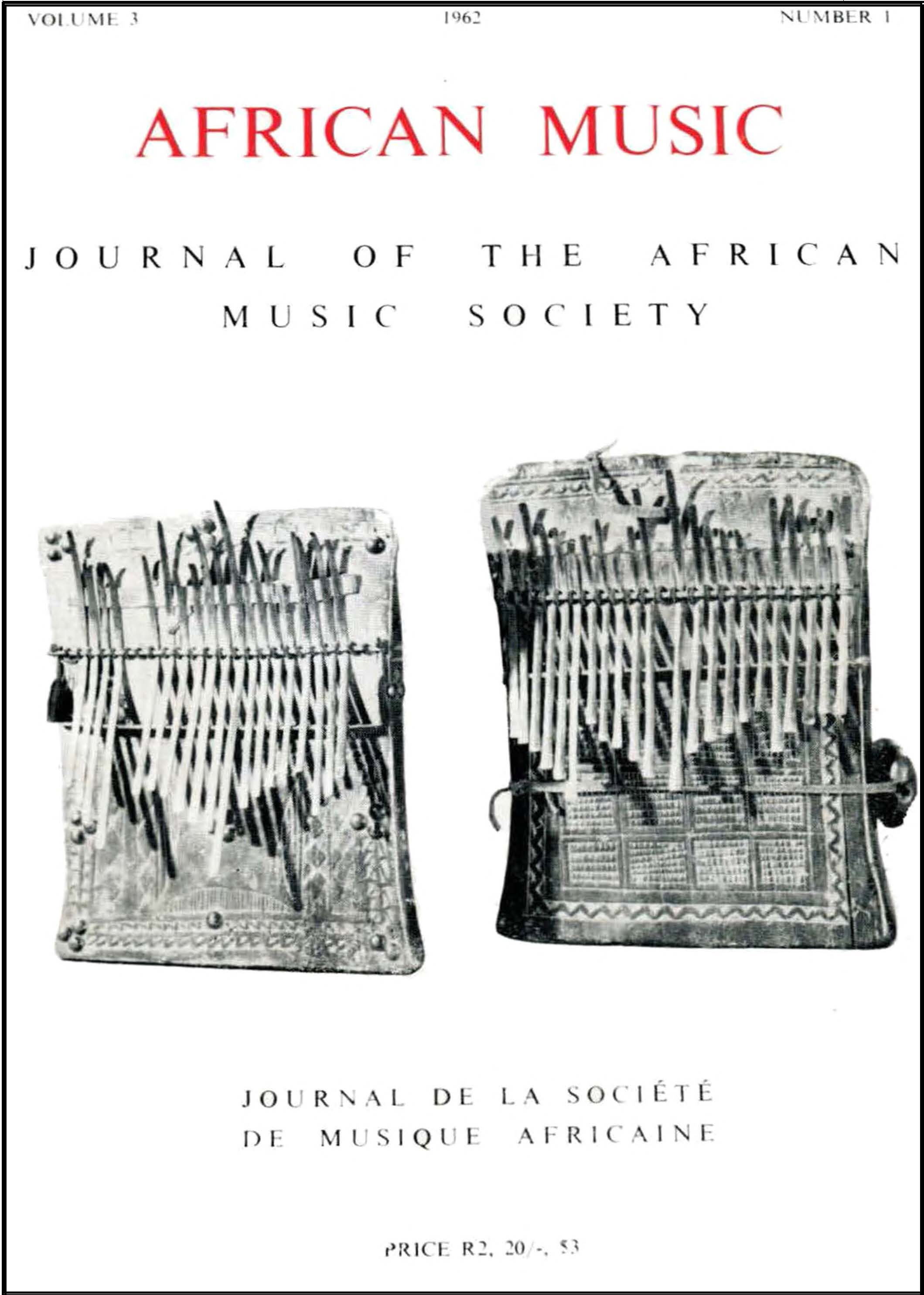Main Title
The Endara xylophone of Bukonjo
Abstract
The log xylophone commonly known in Bukonjo as Endara (the first syllable is high and stressed) seems, according to African informants, to be constructed in the same way all over the region. The three instruments we saw were very much like the Amadinda of Buganda: a base of two fresh banana stems into which a series of sticks are pressed
with the wooden logs or "keys" placed between them. One difference between the xylophone of the Baganda and that of the Bakonjo was that the Endara logs were much bigger and heavier and, perhaps because of this, not attached by cords to the nearest sticks. Even when striking them hard they did not move out of their positions. Another difference was the number of keys, which according to all our African informants has to be 14 for the Endara while the Amadinda of Buganda has 12 keys and the Akadinda usually 22. We must consider ourselves very lucky indeed to have found the xylophone of Bukonjo in at least three different places in the area around Bwera, although we never saw a complete set
played.
with the wooden logs or "keys" placed between them. One difference between the xylophone of the Baganda and that of the Bakonjo was that the Endara logs were much bigger and heavier and, perhaps because of this, not attached by cords to the nearest sticks. Even when striking them hard they did not move out of their positions. Another difference was the number of keys, which according to all our African informants has to be 14 for the Endara while the Amadinda of Buganda has 12 keys and the Akadinda usually 22. We must consider ourselves very lucky indeed to have found the xylophone of Bukonjo in at least three different places in the area around Bwera, although we never saw a complete set
played.
Type of Resource
Language
Created at Date
16/05/1962
Associated Entities
Created at Country
Located at
Subject
In Collection
Preview Image

Identifier
Resource Type
-
TypeDigitalDescriptiontextNotepages: 43-48Methodborn digital
